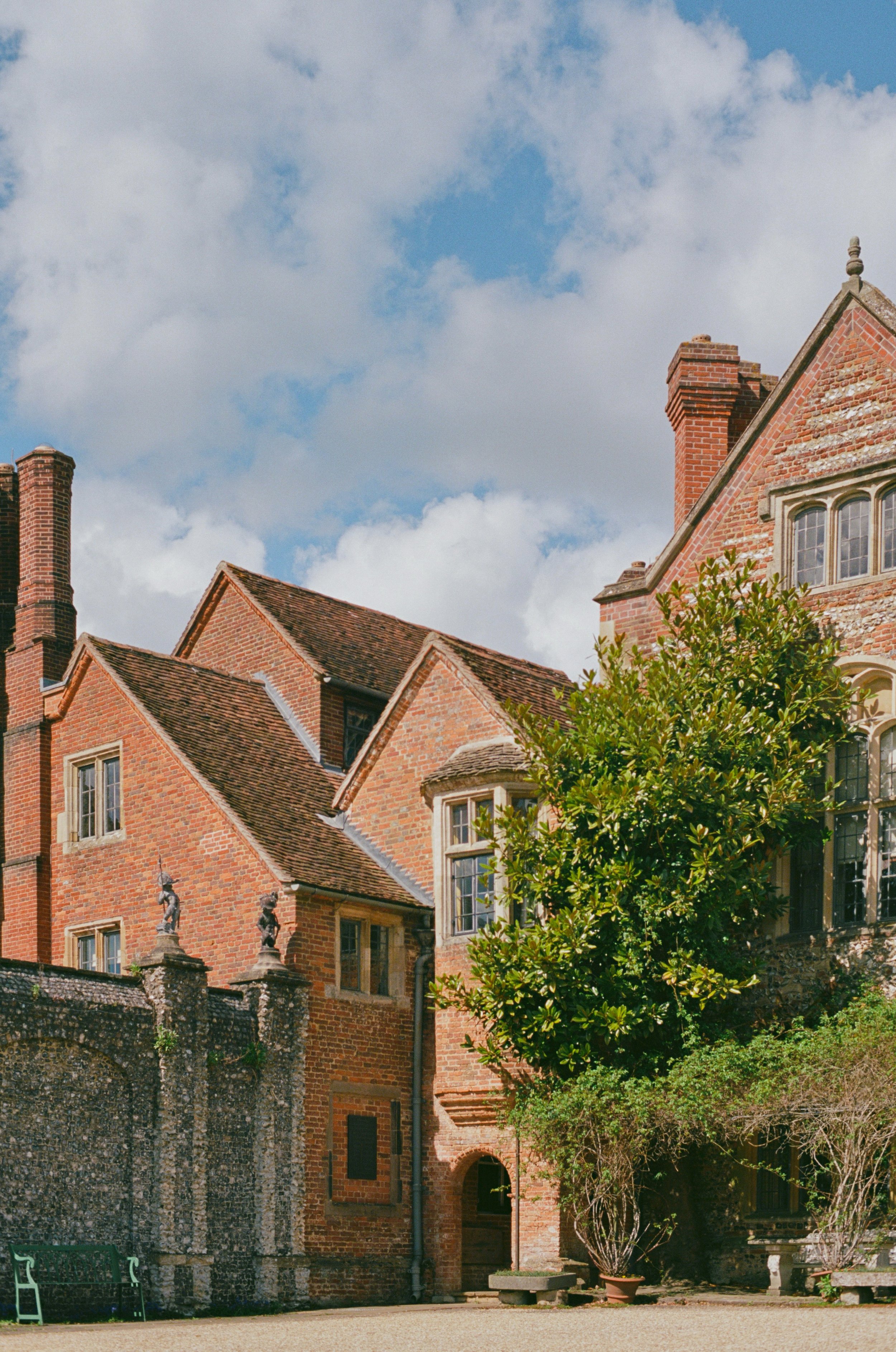Part I: Enjoying the Sights of Spring
One of the great joys of spring is getting back into the swing of regular visits to local landscapes, where bulbs and blossoms are blooming. Follow this with a cream tea in a café and you have yourself the perfect spring day.
Our first visit of the season was to Polesden Lacey, a fabulous Regency house run by the National Trust. Its buttery-coloured exterior and romantic architecture was the perfect setting for Margaret Grenville, a well-known Edwardian socialite, to host parties. The first house built on the site dates to 1336, with different iterations developing over the years. The property’s final owners, Ronald and Margaret Greville, filled the house with a stellar collections of furniture, porcelain, silver and art. Artworks by Peter Lely, Joshua Reynolds and Thomas Lawrence bedeck the walls in the dining room, the first room to the left as you enter the house. It is a room that has seen many a glamorous dinner parties hosted by Polesden’s legendary last matriarch. She hosted the good and great of her day, including Winston Churchill, Charlie Chaplin and Queen Ena of Spain. The future George VI and Queen Elizabeth even spent part of their honeymoon here in 1923. The interior of Polesden is quite lavish, Mrs Greville wanted to impress, ‘I want a room I can entertain Maharajas in’, she once said. On the house tour you can see a sumptuously decorated gold saloon, pictures impressively displayed in wood-panelled corridors, a library, a tea room and a billiard room.
After a tour of the house, there was plenty to enjoy in the 1,400 acre estate, including a romantic walled garden, manicured lawns and ancient woodland. It was a rather grey day when we visited but daffodils, narcissi and crocuses provided riotous colour. Unsurprisingly, the day concluded with lunch in the courtyard café, where warming bowls of soup and fruit scones laden with jam and cream went down a treat. Last spring we made the most of our National Trust membership and we intend to do the same again this year. You can read our 2023 National Trust Trips blogpost here.
On a slightly brighter day, a long walk in Windsor Great Park’s Valley Gardens is a good tonic. This is a much quieter part of the usually busy parkland, and you can easily get lost in the Valley Garden’s winding paths. In March these paths are drenched in different shades of pink and cream as blossom and magnolia trees bloom. Floral confetti litters the ground and delicate petals fall balletically in the gentle breeze. Camellias in an equally dazzling array of jewel-toned colours pepper the pathways.
In May, the Punch Bowl in Windsor Great Park is full of azaleas and rhododendrons in flower. Last year we saw them at their peak. You can read about last year’s spring highlights here.
Our second National Trust trip of the season was Greys Court in Henley-on-Thames. The property dates back to the early Middle Ages and has been modified over nine centuries, creating a patchwork of medieval, Tudor, Georgian, Victorian and twentieth-century influences inside and out. The influential de Grey family held Greys Court when it was first recorded in the Doomsday Book in 1086. In the Tudor period, Sir Francis Knollys demolished many of the medieval buildings and built the main part of the present house, incorporating part of the 1450s building added by the Lovell family. In later centuries, the Stapletons converted the house in the fashionable Georgian style, with romantic medieval ruins, followed by Victorian alterations. The last owners, the Brunners, renovated both house and gardens, which is what can be seen today.
The house holds an important place in women’s history as thirteen women have owned or co-owned Greys Court since the twelfth century, a very unusual phenomenon given property ownership in the past was very male dominated. Evelyn Fleming, the mother of Ian Fleming, the author of the James Bond books, was one of these women, owning the house in the 1930s. The Flemings were the penultimate owners of Greys Court before the Brunners, the family who bequeathed the estate to the National Trust in 1969. Sir Felix and Lady Brunner bought Greys in 1937. The house is full of great objects, including an utterly gorgeous dolls’ house. The dolls’ house mimics a Georgian manor, full of charming domestic details, including beads and broken jewellery for chandeliers, handkerchiefs as soft furnishings and characterful peg dolls bringing the individual scenes to life.
Greys Court has had numerous identities over the centuries, as a Tudor show house to a twentieth-century family home, and hints of the myriad of styles, various fortunes, and tastes of the day can be seen during your tour.
The gardens at Greys Court are utterly beautiful. Interconnected spaces are encased in ancient brick walls where flower beds, blossom trees, vegetable plots, a quaint potting shed and a 125 year old wisteria line the route. Just like the house, the many histories of Greys Court are tapestried into every corner of its landscape, and spring really showcases its many sides.
There are so many different areas of Windsor Great Park to explore, especially as it spans an impressive 4,800 acres. Areas like the Valley Gardens are full of azaleas and rhododendrons, others are more rural. Near Ascot Gate there is a wonderfully quiet part where fields of rapeseeds harmonise with the luscious green grass and blue skies. In summer months, these fields are full of grazing cows and sheep. It’s the perfect place for an after-work walk, something we often indulge in as the days get longer. You can wander around one side of the Great Pond, watch horse riders trot along the paths and see the bluebells turn the woodlands into a carpet of purple.


























